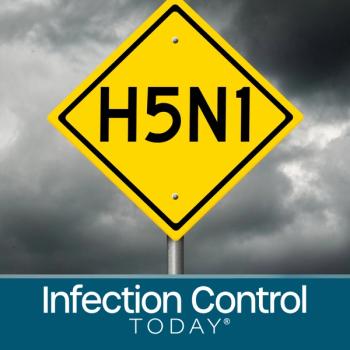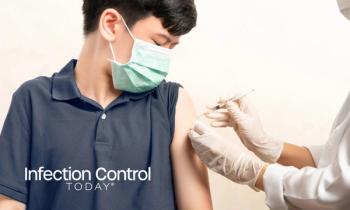
- Infection Control Today April (Vol. 24 No 3)
- Volume 24
- Issue 3
Just How to Investigate an Outbreak: Evolution of the Interrogative Process From SARS to COVID-19
Over the last decade, the world has experienced many outbreaks, pandemics and epidemics, from severe acute respiratory syndrome (SARS) and Middle East respiratory syndrome (MERS) to H1N1 influenza and now COVID-19. Since the symptoms of coronaviruses are similar to that of influenza, it is important to identify outbreaks early, contain them, and prevent person-to-person spread until identification of the cause of the outbreak can be determined.
Coronaviruses can be found in many animal species including snakes, pangolins, camels, cattle, cats, and bats. It is uncommon for an animal coronavirus to infect people and then keep spreading person-to-person. But over the past decade, we have seen just that: 3 coronaviruses infecting humans and causing ongoing person-to-person transmission.
In February 2003, there was an epidemic of SARS first reported in Asia. SARS, or SARS-associated coronavirus (SARS-CoV), spread to countries in North America, South America, Europe, and Asia before it was contained. An estimated 192 people were infected/ detected with SARS-CoV in the United States. Since 2004, no further episodes of SARS-CoV infection have been reported any place in the world.
Next came the coronavirus called Middle East respiratory syndrome (MERS). First reported in Saudi Arabia in 2012, MERS has spread to several countries, including the United States. The largest MERS outbreak took place in South Korea in 2015.
In May 2014, 2 of 1300 patients tested were diagnosed with MERS-CoV infection in the United States. These 2 people were identified as imported cases from Saudi Arabia. One case was in Indiana and the other was found in Florida. Both infections were thought to have arisen from healthcare workers from Saudi Arabia. Both patients made a full recovery. The US Centers for Disease Control and Prevention (CDC) completed an investigation of household members and the healthcare workers who cared for the 2 MERS cases. They all tested negative for the virus.
Common human coronaviruses (types NL63, OC43, and HKU1) usually cause respiratory tract illnesses, such as the common cold. At some point in our lives, most of the population will become infected with a human coronavirus.
Despite advances in medicine, global travel has complicated the ability to control the spread of infectious diseases. Both the 2003 SARS epidemic and the 2009 H1N1 pandemic were spread via air travel. Because of this, all healthcare providers must be aware of and alert to possible emerging diseases and understand how to identify, report, investigate, and contain any outbreak until the cause of the infection can be determined. But what is necessary to control any outbreak situation, whether it is a multidrug-resistant organism, influenza, or a novel virus like COVID-19?
In a recent interview with Infection Control Today®, Bill Jarvis, MD, president of the consulting company Jason and Jarvis Associates, shared information about the CDC’s role in outbreak investigations. Whether an outbreak is suspected within or outside of the United States, the CDC can provide the following assistance, if invited:
· Trained Epidemic Intelligence Service (EIS) officers can travel onsite to assist with the investigation (in collaboration with local infection control personnel).
· Diagnostic specimen or samples of the suspect pathogen can be sent to the CDC’s laboratories for identification, serologic, or genetic testing. In the case of COVID-19, samples sent to the CDC would be processed in appropriate containment areas in the Division of Virology or Special Pathogens/Pathology Laboratories. Once new pathogens, such as COVID-19, are identified, gene sequencing and rapid diagnostic testing can be performed and sent to state and local health departments or even to ministries of health throughout the world. Depending upon the pathogen, the specimen/organism would be directed to the appropriate laboratory (ie, bacterial, fun- gal, viral, protozoan, etc.). A wide variety of specialized laboratories are available.
· Once the pathogen is identified, the CDC can then develop both rapid diagnostic tests (gene probes, serologic tests, etc.) and can provide such rapid or other diagnostic test kits both nationally and internationally to assist in the diagnosis, prevention, and control of the pathogen/ outbreak.
· In addition, either EIS officers or other members of the Division of Quarantine or taskforce personnel can be assigned to critical areas to assist in the control of the outbreak. With COVID-19, this has been seen by assigning CDC and state health department personnel to logistically important airports to assist in screening passengers for COVID-19 and assisting in the isolation of infected or potentially infected people.
It is important to understand that the CDC is a non-regulatory US agency (aside from the National Institute for Occupation Safety and Health-NIOSH). Thus, whether the outbreak is located within or outside the United States, the CDC must be invited to assist by the local/state/national government and/ or healthcare facility. The World Health Organization (WHO) also must be invited.
Possible outbreak situations are usually identified by an astute clinician, infection preventionist, or a clinical laboratory worker. First, a previously unrecognized (COVID-19) or unusual pathogen (MERS), or a pathogen with an unusual antimicrobial susceptibility pattern (vancomycin-resistant Staphylococcus aureus), or an unusual number of cases of a disease (cluster of plague) are noticed. For example, on a Monday morning, it is reported that 4 patients on 1 unit have developed cold symptoms. By Tuesday morning, the number of individuals sick with cold symptoms numbers 6. The continued increase in patients with the same symptoms should be investigated to determine whether there is a respiratory tract infection (RTI) of some type spreading through the facility. Since many coronavirus infections have the same signs and symptoms, it is important to contain the RTIs until the etiology/pathogen identification can be made.
It will have to be determined whether it is the common cold, influenza, or possibly COVID-19. It is the responsibility of every medical professional to remain vigilant for early signs of a cluster or outbreak and to report possible outbreaks caused by new or novel pathogens or unusual multidrug-resistant organisms to the appropriate authorities (in many, if not most, states, legislation requires reporting of outbreaks to county and state health departments). For very unusual or novel outbreaks, both the countries’ ministries of health and the WHO and CDC should be notified as promptly as possible. Initial prevention and control (containment) can prevent spread within and outside the country of origin and potentially prevent a larger outbreak or pandemic.
It is important to track all information using a tracking sheet. A tracking sheet can be adjusted depending on the symptoms identified in each outbreak situation. A well-developed tracking sheet is necessary to analyze all the data that is collected during an outbreak situation. Depending on the situation, the tracking sheet may be small such as for an influenza outbreak or more extensive to track things such as all the rooms a patient had been transferred to or what roommates they may have had, and possibility of exposure.
Components of a simple tracking sheet include:
1 First and last name
2 Unit, wing, or floor
3 Date of birth
4 Gender
5 Age
6 Date of onset of illness
7 Date specimen was collected
8 Result of specimen tested
9 Flu vaccination given y/n (if it’s flu season)
10 Date of vaccination
11 Symptoms (ie, cold, sore throat, malaise, chills, muscle aches,
diarrhea, vomiting, headache, pneumonia)
12 Date hospitalized (if from a nursing home, etc.)
13 Mortality
14 Treatment
Developing a tracking sheet makes it easier to systematically collect data, add new data, and analyze the existing data. Data can then be reviewed from any data point.
Components of an Outbreak Investigation
1. Early identification of a suspected outbreak.
2. Start an investigation.
3. Define a case and an outbreak and pre-outbreak period.
4. Communicate to all healthcare professionals that need to know.
5. Identify all individuals who meet the case definition (patients and staff).
6. Determine if the number of “cases” exceeds the background rate (ie, it is an outbreak).
7. If reportable to local and state agencies, report those concerns. Local and state agencies can aid with case identification, development of investigative approach, prevention and control measures, and assist with specimens.
8. Appropriately isolate all individuals who meet the case definition.
9. Collect appropriate clinical specimens and save all outbreak-specific isolates from potential “cases.”
10. Confirm a diagnosis (rule out a pseudo-outbreak).
11. Be sure proper precautions are in place to contain the outbreak once a diagnosis is confirmed. You may decide to implement proper precaution prior to the diagnosis depending on the situation.
12. Continue to monitor and control the outbreak in order to prevent future spread.
13. Develop a line listing of “cases.”
14. Compare exposures of “cases” to better understand the route of transmission and potential risk factors.
15. Consider conducting additional epidemiologic studies (ie, case-control or cohort studies).
16. Consider performing genetic studies of the pathogen (especially if previously unrecognized or unusual).
17. Institute additional control measures, if needed.
18. Evaluate the efficacy of the control measures.
19. When control measures have terminated transmission, declare the outbreak is over.
20. Communicate to all individuals and agencies involved in the investigation that the outbreak is over.
21. Prepare your final outbreak investigation report.
22. Provide the opportunity for a debrief to identify strengths and weaknesses in the investigation. Information should be obtained from all effected staff.
23. Develop opportunities for improvement and action plans to avoid another outbreak.
Linda Spaulding, RN, CIC, BC, CHEC, CHOP, is an infection prevention consultant and founder of InCo and Associates International, Inc.
Articles in this issue
over 5 years ago
New Dirt on Hand Sanitizers Muddies Claims About EffectivenessNewsletter
Stay prepared and protected with Infection Control Today's newsletter, delivering essential updates, best practices, and expert insights for infection preventionists.






